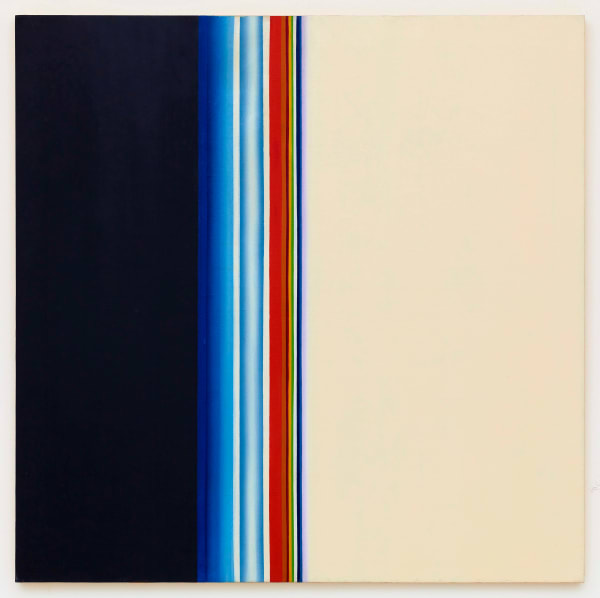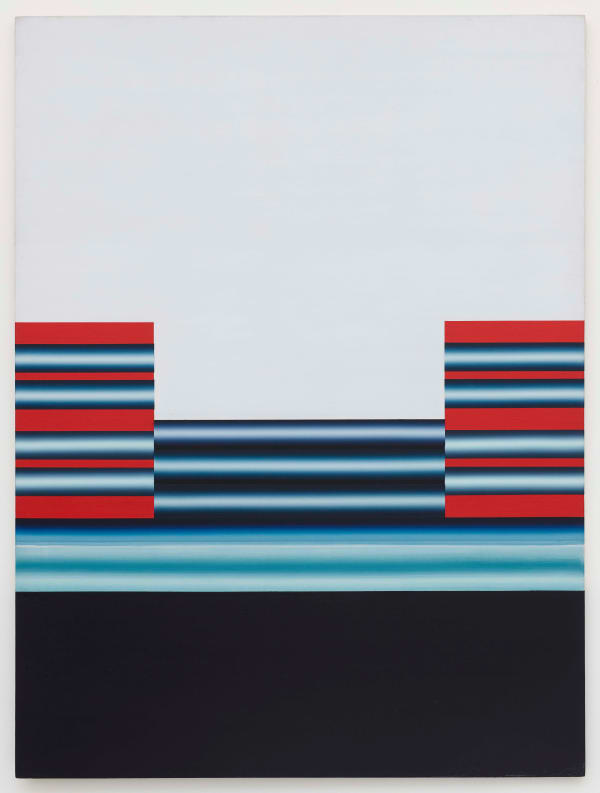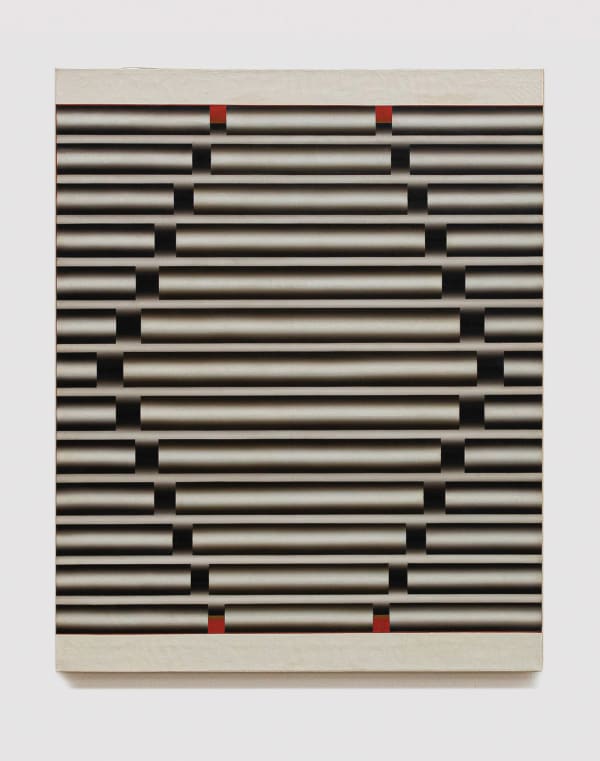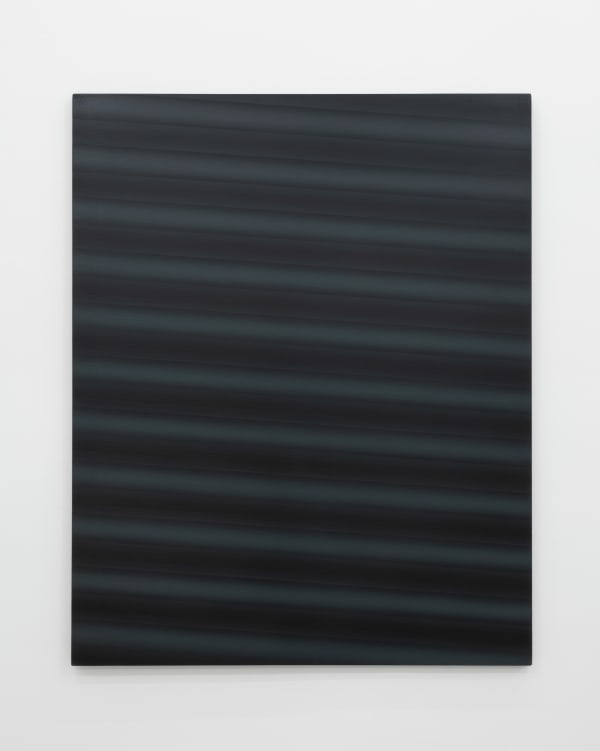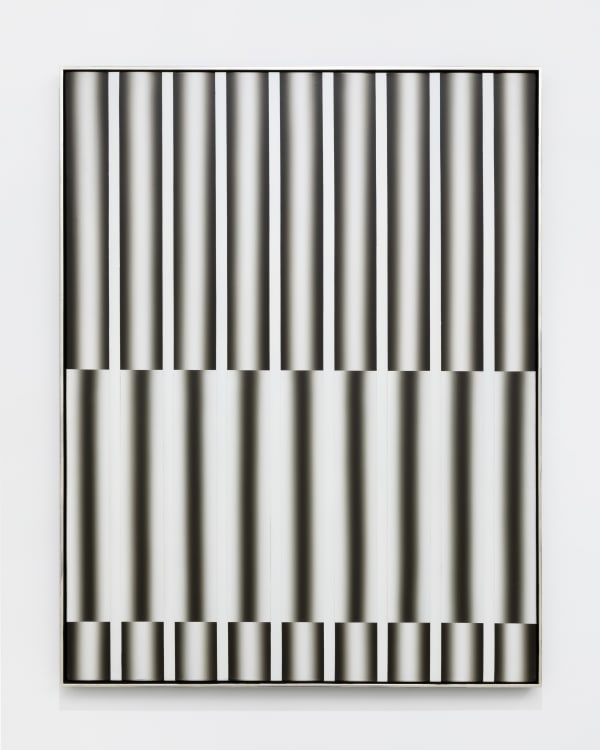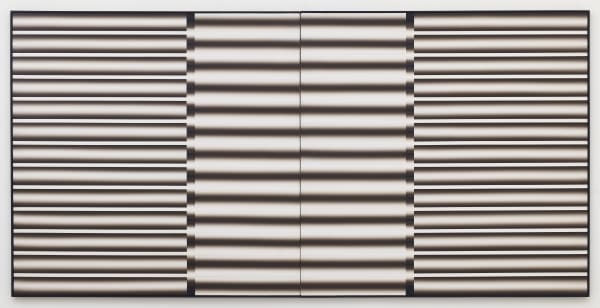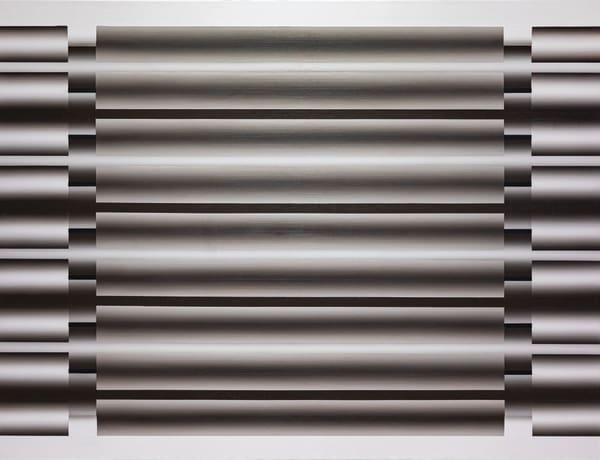Lee Seung Jio: Nucleus in Resonance
Tina Kim Gallery is pleased to announce Lee Seung Jio: Nucleus in Resonance, on view from September 18 through November 8, 2025. This is the gallery’s second solo exhibition dedicated to Lee Seung Jio (1941–1990), a leading figure in postwar Korean geometric abstraction.
The exhibition focuses on Lee’s Nucleus series—his signature body of work developed from the late 1960s through the 1980s—featuring his iconic cylindrical forms that explore energy, rhythm, and perception. Highlights include early foundational works, rarely seen black paintings from 1978, and major pieces featured in the international touring exhibition Only the Young: Experimental Art in Korea, 1960s–1970s.
Lee’s rigorous, process-driven approach to abstraction forged a unique visual language that continues to resonate across generations.
Please join us for the opening reception on Thursday, September 18, from 6–8 PM.
티나킴 갤러리는 2025년 9월 18일부터 11월 1일까지 한국 기하추상의 개척자, 이승조(Lee Seung Jio, 1941–1990)의 개인전, 《공명하는 핵 (Nucleus in Resonance)》을 개최한다. 이승조는 6·25 전쟁 이후 급격한 산업화와 도시화가 진행되던 한국 사회에서 추상 회화의 가능성을 실험하며 독자적인 조형 언어를 구축한 대표적 인물이다. 이번 전시는 그가 1960년대부터 생애 마지막까지 천착한 ‘핵(Nucleus)’ 연작을 중심으로, 추상의 질서 속에서 회화의 근본적인 조건을 탐구하고자 했던 이승조의 작업 세계를 조명한다.
“아폴로 우주선 발사로 새롭게 우주의 공간에 눈 뜨고 부터 시작한 이 작업이, 작가인 내가 살고 있는 시대를 표현하는 데 가장 적합한 것 같아 끊임없이 하고 있습니다.”[1]
이승조는 1960년대 한국의 급속한 산업화와 도시화를 배경으로, 원통 형태의 모티브를 도출해 조형적 체계로 구축했다. 작가는 종종 ‘파이프의 화가’라 불렸지만, 이 호칭을 특별히 반기거나 거부하지 않았다. 그에게 파이프는 구체적 사물을 재현하는 기호가 아니라, 시각적 환영을 드러내고 조형의 본질을 응축하는 구조적 단위였다. 이러한 모티브는 추상과 구상, 평면과 입체의 경계를 넘나들며 화면을 하나의 감각적 장(場)으로 만들어냈고, 이승조는 이를 “입자 덩어리의 세계”라 부르며 새로운 회화적 공간을 탐구하고자 했다.
이승조의 작업은 1960–70년대 한국 실험미술의 형성과 전개 속에서도 중요한 위치를 차지한다. 특히 앵포르멜의 과열과 양식화, 매너리즘의 한계를 자각하며 새로운 조형 어법을 모색하던 가운데, 순수한 조형으로의 환원을 추구한 그룹, 「오리진(ORIGIN, 1962–)」을 창립하며 자신의 예술적 방향을 본격화했다. 또한 개념미술과 퍼포먼스, 영상, 설치 등, 새로운 형식의 미술들이 소개되었던, 《청년작가연립전》(1967)에 참여하였고, 미술이론과 실천이 결합된 한국 아방가르드의 선두 그룹, 「AG」의 주요 멤버로서 당대, 국내외의 미술 흐름들을 능동적으로 교차하며 자신의 회화적 실천을 확장해나갔다.
이번 전시에 소개되는 ‘핵’ 연작의 출발점인 <핵 10>(1968)은 국립현대미술관 (경복궁)에서 열린 《제12회 현대미술초대전》에서 처음 발표되었다. 삼원색의 연속적인 색 띠와 함께 등장한 하늘색 원기둥은 작가 조형 세계의 핵심적 시작이자, 이후 전 생애에 걸친 회화적 여정의 모든 것이 된다. <핵 74-9>(1974)에 이르러, 기하학적 구성의 명확성이 한층 강화되었고 반복과 대칭을 통한 역학적 화면은 한국 미술계에 신선한 충격을 던졌다. 그는 1968년 《제1회 동아국제미술전》에서 대상을, 같은 해 국전에서 문화공보부 장관상을 연이어 수상하며 ‘무서운 신인’으로 자리매김했다.
1970년대에 접어들며 이승조는 작업에 개념적 논리를 적극적으로 부여했고 그 과정에서 현상학적 사유를 수용하며 조형적 탐구와 전환을 맞이한다. <핵 74-07>(1974)과 <핵 73-18>(1973)은 이러한 대표적인 사례로, 지각의 본질에 대한 지속적인 탐구를 보여준다. 당시 그의 작품에서는 이전까지 엄격하게 구분되던 형태와 배경의 위계가 점차 사라지고, 금속성의 차가운 질감 대신 부드럽고 투명한 사선의 결이 등장한다. 절제된 행위로 구축된 이러한 화면은 잔잔한 물결이나 일렁이는 커튼을 연상시키며, 이전과는 또 다른 체험의 깊이를 만들어낸다. 은은한 무채색 단색과 고요하게 펼쳐진 평면적 공간감은 동양적 미의식과 내면화된 정신성을 환기시키며 평단의 관심을 받았다. 이 무렵의 회화는 단색화와 일정한 형식적 접점을 지니는 듯하지만, 파이프 이미지의 해체를 지양하고 고유한 모티브를 일관되게 유지해온 점에서 작가의 확고한 태도를 드러낸다.
1980년대에 제작된 <핵 84-49>(1984), <핵 88-10>(1988)은 형식적 엄격함을 유지하면서도 관람자를 명상적이고 착시적인 공간으로 이끈다. 1983년 안성에 마련한 작업실에서 대형 회화에 몰두한 이승조는 단단히 채워진 형상과 텅 빈 공간, 빛과 그림자, 움직임과 고요, 나타남과 사라짐 같은 상반된 개념들을 한 화면 안에 공존시키며 조형 언어를 보다 근원적인 차원으로 확장해간다. 화면 안에서 수렴과 발산을 반복하는 다양한 시각 요소들은 서로 긴장감을 이루며 능동적인 리듬을 형성하고, 이러한 응축은 생애 말년의 대형 회화, <핵 87-99>(1987)에서 절정에 이른다.
《이승조: 공명하는 핵》은 1978년에 제작된 블랙 페인팅 연작, 《핵 78-23, 78-24, 78-25, 78-26》을 미국에서 처음 소개하며 마무리된다. 이승조에게 있어 검은 색은 단지 하나의 색이 아니라, “침묵과 고요, 비어있음을 위한 원시적 공간이자 모든 조형 요소가 환원되는 종착지”였다.[2] 그의 작업에서 ‘핵’은 이미지의 구조적 중심이자 시각적· 감각적 인식이 응축된 장을 의미한다. 형상과 배경이 분리되지 않고 서로 스며드는 듯 표현된 검은 회화 연작은 이러한 탐구의 결정체로, 물질성과 회화적 수행의 본질에 집중한 공간을 펼쳐낸다.
이승조의 회화는 생전에도 동시대 작가들 사이에서 독자적 조형 어휘로 주목받았지만, 최근 들어 그 예술적 성취와 형식적 복합성이 보다 뚜렷하게 재평가되고 있다. 특히 단색화 이후 한국 현대미술을 바라보는 안팎의 시선이 확장되면서, 기존 회화문법에 안주하지 않고 끊임없이 자기분석과 실험을 이어온 작가의 태도는, 그간 상대적으로 부족했던 연구의 필요성을 부각시켰다. 미술사학자 조앤 기(Joan Kee)는 이승조가 사회적·역사적 조건을 회화적 구성으로 전환하는 구축방식에 주목하며, 그의 작업을 “당대 추상에 대한 비판적 개입”의 결정적 사례라고 평가한다.[3] 이번 전시는 감각의 구조로서 회화를 사유했던 이승조의 실험정신을 되새기며, 평생 반복적인 붓질을 통해 만들어 온 화면이 회화의 유한성을 넘어 문명에 대한 감각이자 새로운 시공간의 차원으로 발산되기를 기원했던 작가의 궁극적 목표를 살펴보는 기회가 될 것이다.


